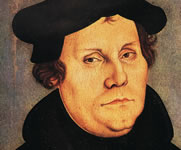Different Styles & Periods
- In the beginning was the castle
- A declaration of love to antiquity
- From Renaissance to Romanticism
- Baroque centre of culture and enlightenment
- Baroque magnificence
- Baroque gardens in the north
- Palatine baroque and Francophile elegance
- Late-baroque treasure troves
- Baroque to Biedermeier in Berlin and Brandenburg
- The Golden Age of Classicism
- Jewels of historicism
- Neo-Gothic romanticism
A declaration of love to antiquity
In general cultural terms the word Renaissance means the "rebirth" of antiquity, but in its narrower, art-historical sense it indicates references to the architecture of classical antiquity and different aspects of its formal language. Besides a rediscovery of architectural features such as columns, pillars and capitals, this style is also associated with an intense preoccupation with nature and the use of harmony and proportion to create beauty. Showpieces of Renaissance architecture combine elements of classical thought with magnificent ornamentation.
Hämelschenburg Castle, Emmerthal
Show on map »
Bückeburg Palace
Show on map »
Güstrow Palace
This is the only Renaissance palace in the north of Germany. Its lavish stucco work, baroque/neo-classical gatehouse and remodelled parterre with historical engravings reflect its former grandeur.
Show on map »
Show on map »
Plön Castle
Clearly visible from afar, this is the only surviving hilltop castle in Schleswig-Holstein. The triple-wing Renaissance brick construction was built during the Thirty Years' War and now houses an academy.
Show on map »
Show on map »
Travel Planner
Select an option...
Location
- Hämelschenburg Castle, Emmerthal
- Bückeburg Palace
- Güstrow Palace
- Plön Castle






